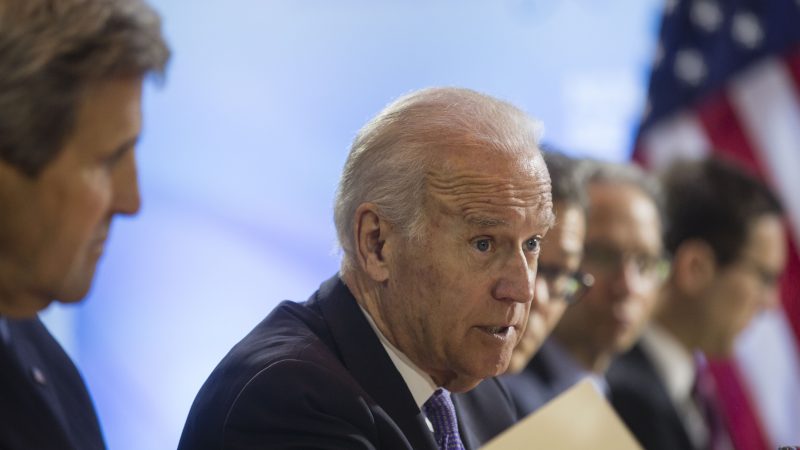
A year ago this August, the U.S passed the Inflation Reduction Act, which cemented a broader turn to a new, green era of US state-led economic development marked by public investment towards building up zero-carbon infrastructure and assets.
The legislation aims to stoke a private green investment boom through generous and near unlimited tax credit subsidies targeting clean electricity and hydrogen production; consumer electric vehicle purchases; decarbonisation of buildings and industrial production; and domestic manufacturing of clean tech inputs.
In the year since its passage, the IRA has already begun to spur similar turns toward green state development turns in the trans-Atlantic context, most notably in the Labour Party. The urgent political project of implementing the IRA offers lessons for necessary state-led transition programmes.
The return of public investment over the primacy of market-led investment
Decarbonisation is best understood as a rapid and comprehensive program of transforming capital and infrastructure stocks through investment and divestment.
A core tenet of Bidenomics and the US turn to green industrial policy, as instantiated through the IRA, is that in former Director of Biden’s National Economic Council Brian Deese’s words “the private market on its own, private actors operating to maximise their own utility, will end up under investing in areas of the economy that have strategic and economic significance.”
Public investment is therefore understood to be necessary to deliver even private investment in the transition. The IRA marks a relative turn to meaningful state direction of private investment towards the transition and a relative increase in public investment, which has been low in both the US and UK for decades.
Through tax credits, congress has not created a fixed pot of money to allocate; instead, it offers endless federal budget to qualified recipients and projects who claim the tax credits, many of which can be stacked with each other and other public subsidies to dramatically reduce financing and operational costs for decarbonisation projects.
Credit Suisse estimates that the IRA could spend $900 billion over 10 years and support over $1.7 trillion in public and private climate spending overall. From this, a Labour government should take note of both the embrace of public spending and the degree of fiscal flexibility.
Here, Labour should embrace a more reasonable fiscal framework that fully accounts for public sector net worth of revenue generating assets. And, it should embrace flexible forms of public financing, such as through increasing the capitalisation of the UK Infrastructure Bank.
Need for coordination institutions to implement the IRA
Although the IRA could spend a relatively large envelope through tax credits, this spending and therefore decarbonisation potential will ultimately be realized only through the development of strong institutions of public coordination and public investment. Market coordination of investment is marked by the need for profit maximisation, private asset ownership, and uncoordinated economic decision making.
This regime poses general obstacles to orderly transition, as even through public subsidy it will lead to structural underinvestment, disorderly divestment, and threatens issues such as inflation and breakdown in supply or production networks.
Particularly for modernising and transforming the energy system, uncoordinated investment even with largescale state fiscal support will be held back by bottlenecks and the whims of private investment decisions—curtailed always by the profit imperative.
Consider the energy grid, blockages to transmission rollout —such as lack of public investment and of national government planning—are physical caps on private renewable generation projects.
Here, Labour should be ambitious in building institutions of public coordination to implement the delivery of its Green Prosperity Plan.
Limits to state-supported private investment and private ownership
Although the turn to public investment to support private green capital expenditure marks a new era in economic statecraft in the US, reliance on private investment and private ownership of clean energy assets in particular poses major obstacles to decarbonisation.
Consider offshore wind: despite heavy subsidy, similar to the UK, for-profit wind developers have recently called for further subsidisation in the face of rising interest rates in supply chain costs.
As forthcoming Common Wealth research shows, direct public investment through public ownership is not only structurally cheaper for both the state and consumers—through lower cost of capital and freedom from obligations to channel profits into dividends—it can ameliorate such instability along key supply chains as part of a green industrial strategy.
This is because a publicly owned company could purchase the goods and services necessary for operation at higher prices while still maintaining lower consumer electricity costs than a profit-maximising private generation system.
Although the IRA does provide support for public generation through “direct pay” tax credits, Labour should learn from early issues in implementing the IRA and be ambitious, and focused on building a strong institution, in its proposed public renewable generation company Great British Energy.




More from LabourList
A year in power: The cabinet on their proudest wins and favourite moments
‘One year on, Labour still hasn’t reckoned with collapsing trust in politics’
‘I’m the Labour MP who beat Liz Truss. Here’s how the campaign to unseat her unfolded’